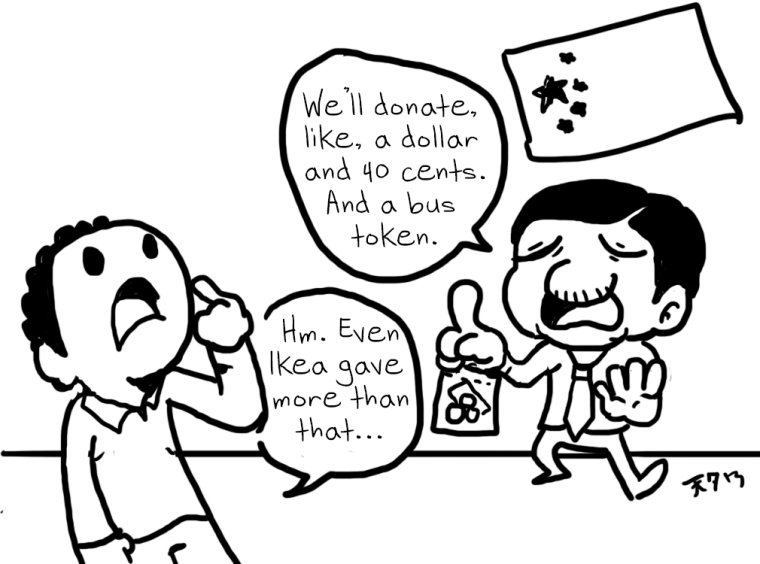Since Typhoon Haiyan struck the Philippines more than a week ago, Juvelyn Taniega has found the bodies of three of her six children.
“My children are decomposing,” she said.
Taniega’s other three children were still missing as of Friday, when CNN reported the incident.
CNN called the post-typhoon scene in the Philippines “apocalyptic.” Typhoon Haiyan has killed at least 3,637 people in the Philippines.
Those who were fortunate enough to survive are struggling to find food, shelter and proper medical care. According to the National Disaster Risk Reduction and Management Council, 12,487 people were injured. NBC reported that three million people were displaced.
“Help us Amerika [sic]” is written in red on the side of a yellow building in Tacloban, the city that has suffered the most damage.
The United States, with the world’s largest economy, has pledged $20 million in aid. Britain is sending $16 million, Japan $10 million and the Vatican $4 million.
But China, with the world’s second-largest economy, has not been so generous. On Nov. 13, it offered just $100,000, which Time magazine called “measly.” The following day, after China received criticism for its paltry donation, Chinese media reported that the country was sending an additional $1.64 million in supplies.
At $1.74 million, China is roughly on par with countries like Ireland ($1.4 million), Italy ($1.3 million) and Spain ($1.8 million). But China’s economy is four times larger than that of Italy, which has the ninth-largest economy. Ireland and Spain aren’t even in the top 10 on the list of largest economies.
China is donating less than even some private entities, including Ikea and Coca-Cola, which have each offered more than $2 million.
But China has not always been so frugal. It offered $5 million after Hurricane Katrina struck New Orleans in 2005, according to CNN. And after an earthquake rocked Pakistan two months ago, the country promised $4.88 million in relief supplies, according to Time magazine. So what does China have against the Philippines?
The two countries have been disputing about territory in the South China Sea since early 2012. The Philippines is taking the case to an international arbitration tribunal, according to The New York Times. The Philippines further irritated China this year when it accepted naval vessels from Japan and supported Japan’s plans to strengthen its military.
The Chinese government should not have used this tragic event as an opportunity to show its aversion to the Philippines.
Even the Global Times, a Chinese Communist Party-linked newspaper that normally flaunts nationalist views, supported sending aid to the Philippines.
“A twisted relationship between the two countries cased by maritime disputes is not the reason to block joint efforts to combat natural disaster,” the Nov. 12 Global Times editorial said. “China’s international image is of vital importance to its interests. If it snubs Manila this time, China will suffer great losses.”
The editorial board said its call for more extensive Chinese assistance doesn’t affect its feelings about the South China Sea issue.
“Chinese society can handle these two different matters,” it said.
The Chinese editorial board of the Global Times had the courage to admit that its country was in the wrong. So it would only be fair if I point out that the U.S. hasn’t always been so altruistic in its disaster relief aid, either. Jin Canrong, professor of international relations at Renmin University in Beijing, said critics should remember that the U.S. only sent $20,000 when China’s Yangtze River flooded and killed 3,704 people in 1998.
As an American, it’s difficult to shame the Chinese government when my country’s government has done the same. But as a Filipina with family members in Lambunao, Iloilo who lost everything in the storm, it’s not at all difficult to say this: China is in the wrong.





